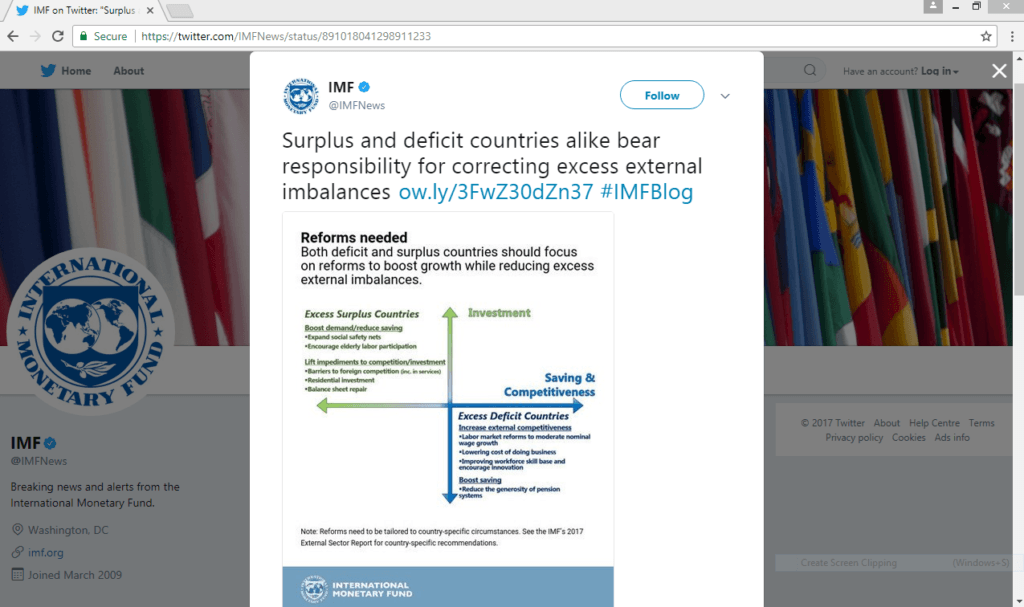On Twitter, people are discussing the Argentinian debt in foreign currency, as if it’s solely the error of the government to have done it. There is of course truth to it, some governments might volitionally issue bonds in foreign currency. But that alone seems insufficient as an explanation.
Also, people wonder what the government does with the funds obtained. Maybe the government buys some goods for public distribution? But if the government wants to buy something from abroad, it can anyway make an FX transaction with a bank and this question about usage for goods doesn’t seem that relevant.
The answer is: original sin.
In their paper Exchange Rates And Financial Fragility, Barry Eichengreen and Ricardo Hausmann write:
The Original Sin Hypothesis. The second view emphasizes an incompleteness in financial markets we call “original sin.” This is a situation in which the domestic currency cannot be used to borrow abroad or to borrow long term, even domestically. In the presence of this incompleteness, financial fragility is unavoidable because all domestic investments will have either a currency mismatch (projects that generate pesos will be financed with dollars) or a maturity mismatch (long-term projects will be financed with short-term loans).
Critically, these mismatches exist not because banks and firms lack the prudence to hedge their exposures. The problem rather is that a country whose external liabilities are necessarily denominated in foreign exchange is by definition unable to hedge. Assuming that there will be someone on the other side of the market for foreign currency hedges is equivalent to assuming that the country can borrow abroad in its own currency. Similarly, the problem is not that firms simply lack the foresight to match the maturity structure of their assets and liabilities; it is that they find it impossible to do so. The incompleteness of financial markets is thus at the root of financial fragility.
It follows that both fixed and flexible exchange rates are problematic.
Of course, this is a bit hypothetical but how does it work?
Ronald Mckinnnon, in his paper Money And Finance On The Periphery Of The International Dollar Standard, highlighted the mechanism:
Consider the implications for optimal short-term foreign exchange management, first when capital controls are absent, and second, when they are effectively applied.
- Case 1: No capital controls, imperfect bank regulation. Either because regulatory weakness leaves too many banks (and possibly importers) with exposed foreign exchange positions, or because the government doesn’t want to impose draconian rules against institutions assuming any open foreign exchange position, an informal hedge is provided by keeping the exchange rate steady in the short term. The short time frame over which foreign currency debts—largely in dollars—are incurred, and then repaid on a day-to-day or even a week-to-week basis, defines the same time frame over which the dollar exchange rate is (and should be) kept stable in non-crisis periods.
- Case 2: Direct capital controls. Suppose the government prevents banks, other financial institutions, and individuals from holding any foreign exchange assets or liabilities. Non-bank firms engaged in foreign trade cannot take positions in foreign exchange except for the minimum necessary in their particular trade. Importers are prevented from building up undue foreign currency debts except for ordinary trade credit, and exporters are required to repatriate their dollar earnings quickly. In particular, banks cannot accept foreign-currency deposits or hold foreign-currency deposits abroad, or make foreign-currency loans. Then private agents in general, and banks in particular, cannot act as dealer-speculators to determine the level of the exchange rate (McKinnon, 1979, Ch. 6). The exchange rate will become indeterminate (highly volatile) unless the government steps in as a dealer to clear international transactions. Thus, the government must take open positions, which determine the level of the exchange rate, and assume the exchange risk. So if the government is determining the exchange rate day-to-day anyway, why not keep it stable?
Real life is a mix of the two cases above.
The exchange rate is where asset supplies and demands clear. But it’s possible that this market clearing doesn’t happen. So the government needs to intervene to allow this happen. This requires the government to borrow in foreign currencies and sell foreign currency in in the foreign exchange markets.
But this process is unsustainable and the adjustment happens via structural reforms, i.e., wage cuts and deflation of domestic demand and output. That is unfortunate and the real solution is to reform the IMF and the WTO.
